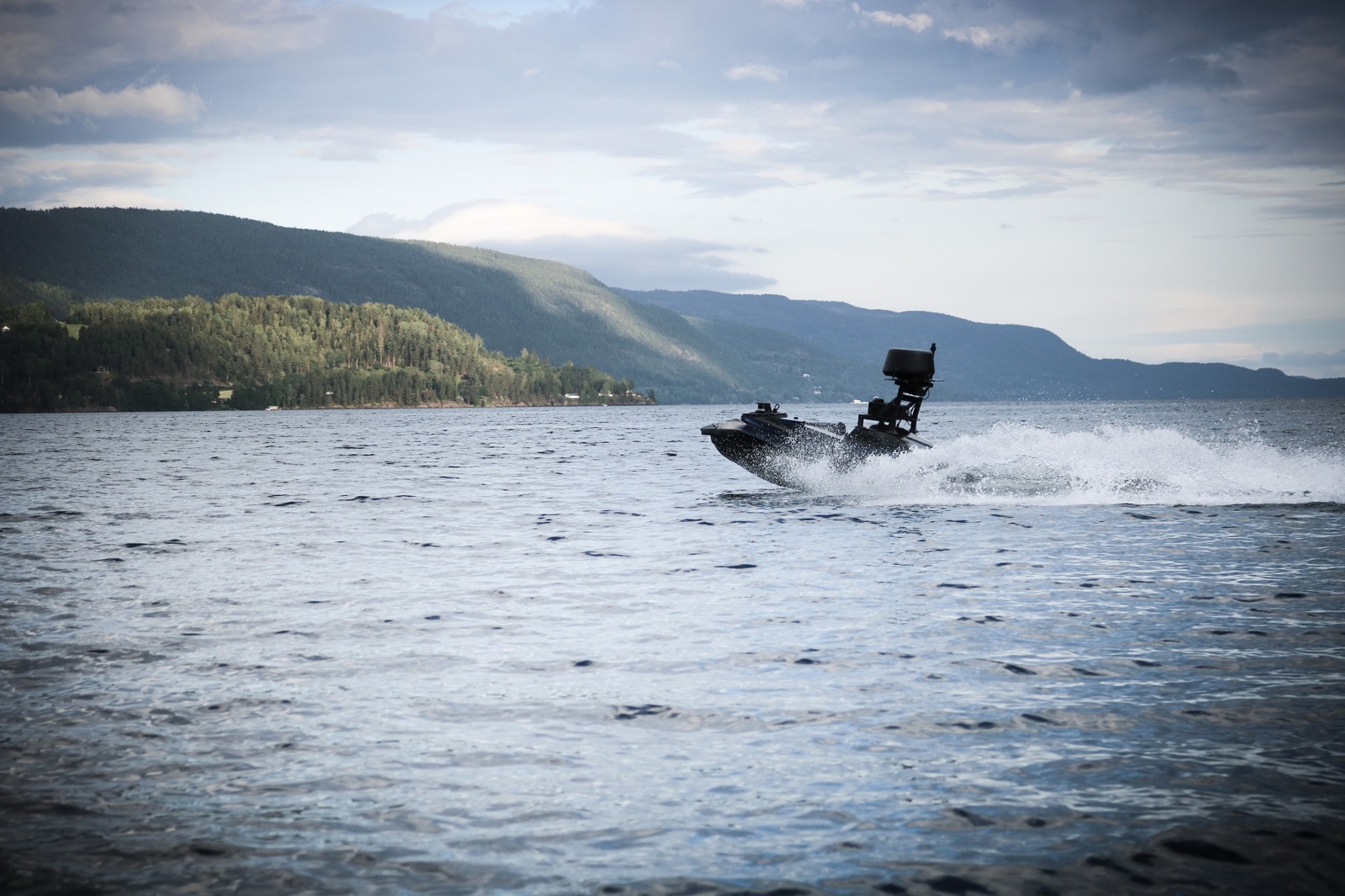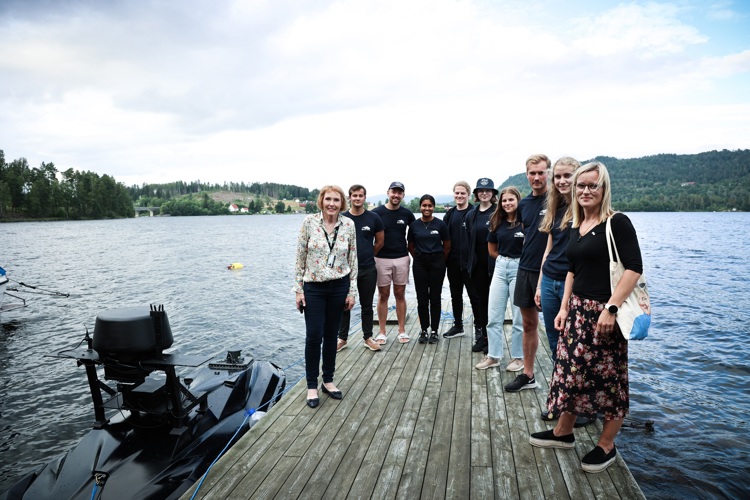
Autonomous Waterjet Presented by Summer Interns
Last week, interns from KONGSBERG’s Summer Internship Programme presented the project Coastal Shark with a live demonstration of the autonomous waterjet Aegir on Lake Eikeren, Norway.
-
Text:Laura Helene Sletbakk, Communications Manager KDA
Photo:Laura Helene Sletbakk
The Coastal Shark-project has been several years in the making, and the converted waterjet Aegir can do a wide range of tasks with the help of algorithms, such as calculating routes and searches, and detect objects in water. This year, the summer interns was given the task of further develop Aegir to detect, classify and follow moving objects in a maritime environment.
The Summer Internship Programme is an important contribution to the national technology effort Kongsberg Defence & Aerospace has promoted for many years. The programme gives interns relevant and valuable work experience, and it also shows how academic theory can be applied in practice.
Valuable work experience
“We see that there is a high drop-out rate amongst students in the first years of their studies, and we want to reduce this by showing all the exciting aspects of work life that awaits after graduation. This year, six different projects has been completed, included positions filled at the Technical Department. The Summer Internship Programme creates a unique way for us to get to know students, and students get real-time work experience. KONSGBERG has had 660 summer interns the last 4 years,” says a proud Anne Gro Kjørstad, Manager HR Services, KONGSBERG.
Close to 2,000 students applied for the Summer Internship Programme 2021. In 2019, a record of 180 interns were involved across different summer-projects.
Autonomous Aegir
The Coastal Shark project was established back in 2015 with the aim of successfully converting a waterjet into an unmanned surface vessel (USV). The main goal was to create a vessel that can be remotely controlled and carry out a number of different missions. In order to solve this year’s task, the interns used tools such as LiDAR and radar – both needed in order to detect objects at sea.
“LiDAR can make detailed measurements, but has a range of only 20 meters. That’s why we also need the radar which has a range of 1000 meters, but which can only make rough measurements,” says Eirik Midtun, project manager for this year's Coastal Shark-project. “Both the LiDAR and the radar were already installed by former summer interns, but the data collected was not integrated. Therefore, this year we worked to combine the data from these two technologies.”
After an object is detected, Aegir takes pictures or video using a sensor camera. The data is then analysed and classified using machine learning. The interns communicate with Aegir via radio from a land station. From there, the they can give the USV new orders, as well as receiving both photo and video-data from the sensor camera.
“This year, we have focused on Aegir and its ability to detect, classify and follow another surface vessel,” says Midttun. “The big challenge this year was getting to know the project – since the new project members had no prior knowledge of Aegir. Since there were no Summer Internship Programme carried out in 2020 due to the pandemic, there haven’t been an effective transfer of knowledge. But this summer has been incredibly educational and we reached the goals we set at the beginning of the project.”

About the project
CoastalShark is a summer project in KONGSBERG that has been running since 2015. The initial task was to create a remote controlled unmanned surface vehicle (USV) by rebuilding a water-jet and implement own mechanical, electrical and technical solutions. The result became Aegir, an USV named from Norse mythology; a giant who reigns over the sea.
Aegir has evolved and can receive missions and operate autonomous based on way-points using regulators, route/search planning algorithms and different sensors e.g. to avoid and detect objects. The applications for the USV can be various, in general the goal is to make Aegir further autonomous and able to manage new challenges on its own.
CoastalShark is a project where the students are organized like a team with project leader and sub-groups; mechanics and electronics takes care of the physical aspect by maintaining and implementing new solution on the complex vehicle. Software is the largest group who develop graphical user interfaces, computer vision, communication protocols, sensor implementation, navigation algorithms etc. The students plan their work themselves and cooperation is essential to be able to reach the goals during the summer.
